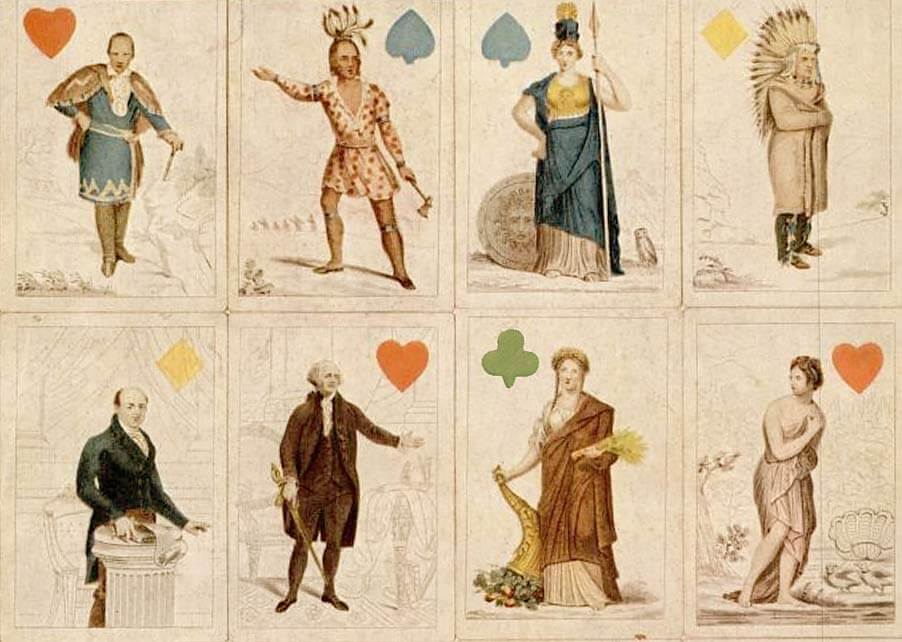Home / Blogs / Seeing Red (and Black): How Playing Cards Got Their Iconic Colors
Seeing Red (and Black): How Playing Cards Got Their Iconic Colors
By Mike - 09/28/2023
If you’re a solitaire fanatic, you probably have more than one deck prepared to play at all times. Don’t worry about it, that just makes you a distinguished person of taste.
And while it’s possible to find playing cards in all different styles and colors these days, it’s difficult to argue the impact and significance of the classic red and black decks. In fact, they’re so ubiquitous that you might not have even noticed that your favorite deck is red and black! Go ahead and check it, I’ll wait…
If a shiver just ran down your spine, don’t worry, I’m not a sorcerer or anything. Two-color playing card decks have been the most popular style of deck since the 15th century. I’m just a guy who likes playing cards and their history. And today, I have some of that for you! Let’s take a look at the history of the two-color deck of playing cards, and how our great card-playing ancestors settled on red and black.
We have other awesome articles on the blog that go in-depth about the history of playing cards and the formation of the different suits, so I won’t spend too much time on that. Definitely check those out if you haven’t already.
For the purposes of this particular article, all you need to know is that playing cards are believed to have been invented sometime in the 9th century, and there were MANY different variations based on the regions and cultures that printed them. Heck, even tarot cards were initially created to play games with, not tell fortunes!
However, basically all card decks at the time were prohibitively expensive for most people. There was no mass manufacturing back then, so decks of cards commanded high prices due to the artistry it took to create them by hand. Individually. In order to bring the costs down so that more people could experience the joy of card games, that artistry and complexity needed to be cut down. That meant simplifying designs and limiting the colors used to differentiate the suits.
 For instance, let’s take a look at the “Seminole Wars Deck'' created by J.Y. Humphreys in 1819. This four-colored card deck featured the French suits as we know them (although with the images of European royalty switched out for some other faces you might recognize), but utilized a different color for each one. Yellow diamonds, blue spades, green clubs, and red hearts. The thinking behind the myriad of colors was to prevent players from becoming “confused” or “mistakenly” playing the wrong cards during trick-taking games. I suppose there was something of a cheating epidemic at the time, which might have facilitated the creation of these kinds of decks. Cheaters!
For instance, let’s take a look at the “Seminole Wars Deck'' created by J.Y. Humphreys in 1819. This four-colored card deck featured the French suits as we know them (although with the images of European royalty switched out for some other faces you might recognize), but utilized a different color for each one. Yellow diamonds, blue spades, green clubs, and red hearts. The thinking behind the myriad of colors was to prevent players from becoming “confused” or “mistakenly” playing the wrong cards during trick-taking games. I suppose there was something of a cheating epidemic at the time, which might have facilitated the creation of these kinds of decks. Cheaters!
The way these colors were achieved was by mixing compounds into linseed oil to create vibrant colors, but certain colors were more delicate than others. Blue and green tended to fade after prolonged exposure to sunlight, and they both required expensive copper compounds to create on top of that. Red and black, however, were different. They only required soot and cinnabar - two cheap or even free compounds in some cases - to be mixed with the linseed oil.
So, with red and black cards you had cheap, long-lasting suits that had great contrast and visibility when printed on white cardstock. Once that discovery was made, those who made their living and built businesses on printing cards never looked back.
So there it is. Like most things in this world, the proliferation of red and black playing cards pretty much came down to basic cost efficiency. Sure, that’s not a very glamorous or mysterious conclusion, but not everything can be as exciting as a trip to the International Spy Museum.